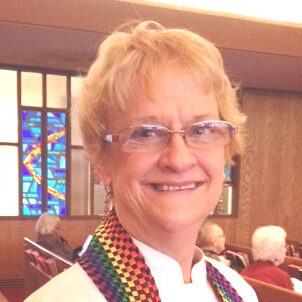Helping Children Be Thankful
Almost every parent has been there: pressuring their young child to write the obligatory thank-notes to Aunt Charlotte and the next-door neighbor after Christmas or their birthday. But does sending those notes under mild duress make your kids really feel grateful?
The fact is: we cannot make children be thankful. We can only make them send cards. Scientific researchers acknowledge that no one is born grateful. Thankfulness has to be learned.
Even though gratitude is one of the trickiest concepts to teach toddlers and preschoolers, it is one of the most important values to teach, says one been-there-done-that parent.1 By learning gratitude, naturally self-centered preschoolers can become sensitive to others’ feelings and can develop other life skills along the way.
Children as young as fifteen months begin to grasp that they are dependent on Mom and Dad. By age two or three, they can talk about being thankful for pets, people, and specific things. By age four they can understand what it’s like to be thankful for acts of caring and kindness.
Children learn early to model their parents, so parents saying “please” and “thank you” can have an influence. But there is far more that an adult can do. For example:2
- Work gratitude into your daily conversation – Try to weave appreciation for mundane things into your everyday talk. You may pick a “thanking” part of the day, such as at the dinner table or in bedtime prayers.
- Have kids help – Even if they take forever to clear the table or make a mess mixing the pancake batter, it’s worth it for parents to involve their kids. Children realize it takes effort when they share in simple household chores.
- Find a goodwill project – Figure out a way your child can assist you in helping someone else, even if it’s as simple as making cupcakes for a sick neighbor.
- Encourage generosity – Frequently donate toys and clothes to less fortunate kids. Your children will be inspired to go through their own closets for others, as well.
- Insist on thank-you notes – Writing a thank-you note still is a great idea, even if it’s your youngster’s scribble or drawing to which you add a few words.
- Practice saying no – It’s hard for a child to feel grateful when their every whim is granted. Saying no a lot makes saying yes that much sweeter.
- Be patient – You can’t expect gratitude to develop overnight. It requires weeks, months, maybe even years of reinforcement.
Intentionally practicing any of these things as consistently as possible will bear fruit in your child’s character.
Along the way, kids can get a pretty good idea of what being thankful is. Here are two examples:
I’m thankful for my life and God and what God did to help me with things. To be thankful means to thank God for what you have. Hannah, age 9
You can share love and blessings with other people by being nice to them and not saying, “I don’t want this” when they give you something. Kellan, 7
Likewise, the children could identify what prompted them to be thankful:
I’m thankful for family, friends, animals and video games. Grant, 9
I’m thankful for God putting me on this earth and to have wonderful parents and family. [To be thankful] means to be grateful and just to be humble. … I can help other people by giving them clothes and helping them and washing cars. Trey, 10
Gratitude begins early, says gratitude researcher Robert Emmons.4 Practicing being thankful reinforces gratitude in us. It allows us to acknowledge our dependence on others and to move outside of ourselves into a larger, more intricate network of sustaining relationships.
Even for a young child, being thankful involves more than just saying thank you. In a project with families as children grew from kindergarteners to young teens 5, researchers discovered four parts to the experience of gratitude. Asking questions about each aspect can help children become more aware of their response. For example:
- Notice – What have you been given or what do you already have in your life for which you are grateful?
- Think – Why do you think you received this gift? Do you think you earned the gift because of something you did yourself, or was it given to you without your having done anything for it?
- Feel – What does it feel like inside you to get this gift? What is it about the gift that makes you feel happy?
- Do – Is there a way you want to show how you feel about this gift?
While many parents tend to jump to the last of the four, Do– like writing thank-you notes in response to gifts – questions particularly related to Notice, Think, and Feel can help children receive gifts more deeply. As children consider what they are thankful for and why they are thankful, they find a deeper meaning to their thankfulness.
So we return to those after-Christmas and after-birthday thank-you notes. Doing is still a good part of being thankful. But you can emphasize the why of it all by stressing the importance of caring, supportive relationships between your child and the giver, and the stronger sense of community that develops between them.
Betsy Schwarzentraub
1 – Charlotte Latvala, “Teaching Children to Be Grateful,” https://www.parents.com/toddlers-preschoolers/development/behavioral/teaching-children-to-be-grateful/
2 – Ibid. Explanations are selected highlights from Latvala’s descriptions.
3 – The interviews were done for a series of television ads for The United Methodist Church. Nov.-Dec. 2017, http://www.interpretermagazine.org/topics/kids-thoughts-on-gratitude
4 – Robert A. Emmons, Thanks! How Practicing Gratitude Can make You Happier, pp. 51f.
5 – https://greatergood.berkeley.edu/article/item/what_parents_neglect_to_teach_about_gratitude, written by Andrea Hussong, director for the Raising Grateful Children project at the University of North Carolina Chapel Hill.


